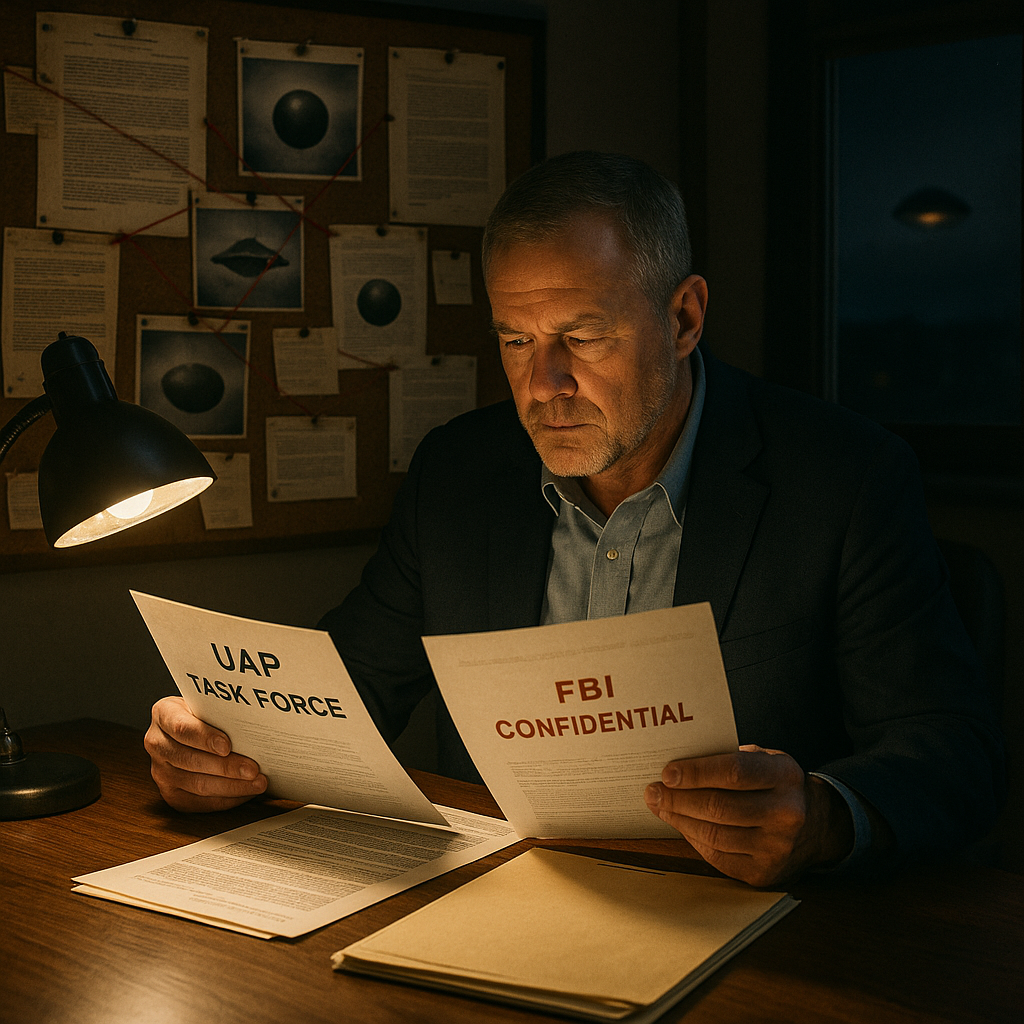Jay Stratton Breaks Silence: FBI’s Deep Involvement in UAP Investigation Confirmed

On May 28, 2025, Jay Stratton, the former Director of the U.S. Government’s UAP Task Force and a retired Defense Intelligence Senior Executive, issued a rare public statement on X (formerly Twitter). His message directly responded to growing speculation that the FBI only recently became involved in the investigation of Unidentified Anomalous Phenomena (UAP).
Stratton strongly refuted those claims, affirming that the FBI has taken UAPs seriously for years and was one of his first partners when building the UAP Task Force nearly seven years ago. He praised the Bureau as seasoned, professional, and deeply committed to the mission. According to Stratton, the FBI actively supported classified briefings to Congress and has remained a trusted partner throughout.

This involvement isn’t new. A famous 1950 memorandum from FBI Special Agent Guy Hottel, now declassified and part of the FBI’s Vault, referenced the recovery of “three so-called flying saucers” in New Mexico—each occupied by small humanoid bodies. The memo also noted a theory that high-powered radar installations in the area may have interfered with the craft’s control systems, potentially causing them to crash. Though its credibility has long been debated, the document underscores the Bureau’s historical awareness of crash retrieval claims and its long-term relevance in UAP investigations. Additionally, Memorandum 6751, a declassified 1947 document attributed to an unnamed intelligence source, describes non-terrestrial beings visiting Earth from other dimensions, further hinting at the FBI’s early exposure to extraordinary claims of non-human intelligence.
More recently, during the Trump administration, when reports of strange drone-like craft hovering over New Jersey began to escalate, President Trump reportedly bypassed the FBI and instead asked then-press secretary Stephanie Grisham and advisor Susie Wiles to quietly look into the matter. This decision raised eyebrows, as it diverted the investigation away from traditional intelligence channels and may reflect internal concerns about how UAP-related incidents are handled at the federal level.
But the real significance of this statement lies in its context: Jay Stratton has previously admitted, off-record and in trusted circles, that he is a firsthand witness to non-human intelligence. In his words: “I have seen with my own eyes non-human craft and non-human beings.”
This isn’t just another former official speaking hypothetically. Stratton is a highly credible witness. He held high-level security clearances, led multiple classified intelligence programs, and was deeply embedded in the U.S. government’s study of UAPs. His confirmation of direct FBI involvement lends serious weight to the idea that the U.S. government has long known far more about UAPs than it has publicly admitted.
Stratton’s choice to speak out now, with an emphasis on ongoing collaboration with the FBI, signals a shift. It suggests that interagency cooperation is deepening and that the push for public transparency is accelerating. When someone of his rank and access says the FBI is all-in—and that he’s seen non-human beings firsthand—it changes the conversation entirely.
This marks a pivotal moment in the timeline of UAP disclosure. The narrative is no longer being driven by anonymous insiders or speculative leaks—it’s now being shaped by trusted, credentialed officials coming forward on the record.
The pushback against deeper inquiry into UAPs extended to legislative actions, with key leaders deciding to halt additional congressional hearings on the topic—reportedly to avoid further embarrassment to the Department of Defense. David Grusch, a former intelligence official turned whistleblower, was originally assigned by Jay Stratton to investigate special access programs. Through that assignment, Grusch uncovered compelling evidence of crash retrieval operations and efforts to reverse-engineer non-human technology, all while facing intense institutional resistance.
Jay Stratton also worked closely with Dr. Eric Davis, a physicist known for his research on exotic propulsion and theoretical physics. Their collaboration began during the AAWSAP and AATIP era, where Davis contributed a series of technical papers exploring advanced aerospace technologies. Stratton’s intelligence leadership and Davis’s scientific insight formed a key part of the government’s deeper efforts to understand and document UAP phenomena.
On May 1, 2025, at the ‘Understanding UAP: Science, National Security & Innovation‘ congressional briefing held in the Rayburn House Office Building in Washington, D.C., Dr. Davis delivered one of his most powerful public statements to date: “The craft that had been recovered are not of this Earth. They’re not made by human hands. They are not from this planet. They are not human. They are an alien technology. Whatever the word alien means—are they extraterrestrial? We don’t know… We just need to take data. We call it measurements and signals intelligence in the intelligence industry.”
In addition, Stratton maintained a professional partnership with Dr. Hal Puthoff, another key figure during the AAWSAP and AATIP period. Puthoff, a physicist with expertise in theoretical physics and parapsychology, authored influential papers on warp drives, traversable wormholes, and other advanced concepts. His work complemented Stratton’s intelligence oversight, helping to shape the U.S. government’s exploratory framework for understanding the physics behind non-human technologies. Puthoff has also publicly stated that more than ten UFO crash recoveries have occurred within the United States—further reinforcing claims of a longstanding, covert effort to recover and study non-human craft.
In light of Jay Stratton’s statement, the veil continues to thin. The reality of UAPs is no longer confined to classified briefings or whispered accounts—it’s being confirmed by those who were directly involved. His affirmation of the FBI’s long-standing role isn’t just a correction of public misunderstanding; it’s a signal flare revealing a deep-rooted investigative infrastructure that has quietly spanned decades, administrations, and secured compartments. When figures like Stratton, Dr. Eric Davis, Dr. Hal Puthoff, and whistleblower David Grusch converge on a shared truth—that non-human technology exists and has been recovered—it marks a decisive turning point. We’re not waiting for disclosure anymore; we’re living through it.

